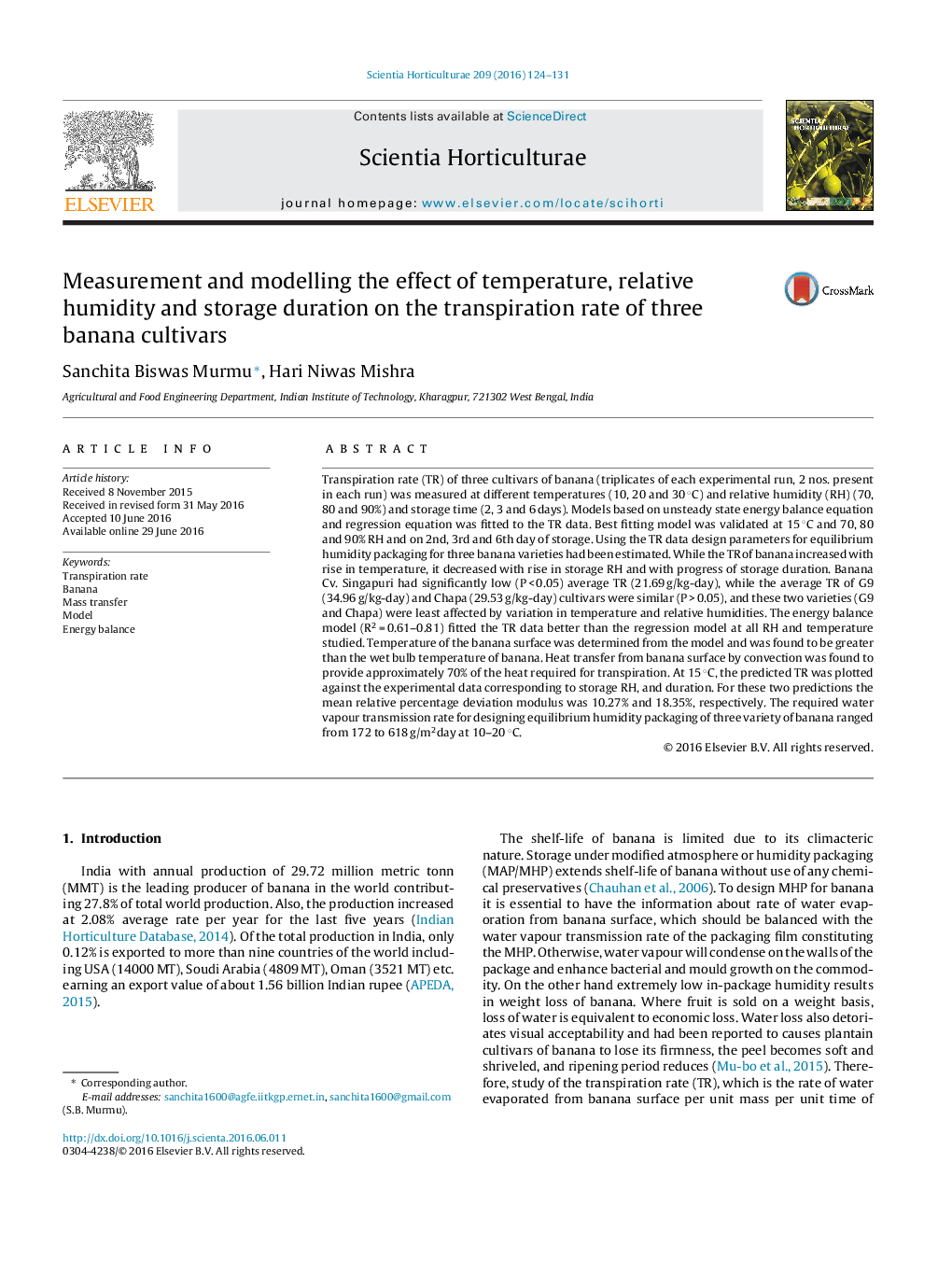| کد مقاله | کد نشریه | سال انتشار | مقاله انگلیسی | نسخه تمام متن |
|---|---|---|---|---|
| 4565960 | 1628789 | 2016 | 8 صفحه PDF | دانلود رایگان |
• Banana cv. Singapuri had significantly low (P < 0.05) average value of TR (21.69 g/kg-day), while the average TR of G9 (34.96 g/kg-day) and Chapa (29.53 g/kg-day) cultivars were similar (P > 0.05); these two varieties (G9 and Chapa) were least affected by variation in temperature and relative humidities.
• The energy balance model (R2 = 0.61–0.81) fitted the TR data better then the regression model at all RH and temperature studied.
• The required water vapour transmission rate for designing equilibrium humidity packaging of three variety of banana ranged from 172–618 g/m2day at 10–20 °C.
Transpiration rate (TR) of three cultivars of banana (triplicates of each experimental run, 2 nos. present in each run) was measured at different temperatures (10, 20 and 30 °C) and relative humidity (RH) (70, 80 and 90%) and storage time (2, 3 and 6 days). Models based on unsteady state energy balance equation and regression equation was fitted to the TR data. Best fitting model was validated at 15 °C and 70, 80 and 90% RH and on 2nd, 3rd and 6th day of storage. Using the TR data design parameters for equilibrium humidity packaging for three banana varieties had been estimated. While the TR of banana increased with rise in temperature, it decreased with rise in storage RH and with progress of storage duration. Banana Cv. Singapuri had significantly low (P < 0.05) average TR (21.69 g/kg-day), while the average TR of G9 (34.96 g/kg-day) and Chapa (29.53 g/kg-day) cultivars were similar (P > 0.05), and these two varieties (G9 and Chapa) were least affected by variation in temperature and relative humidities. The energy balance model (R2 = 0.61–0.81) fitted the TR data better than the regression model at all RH and temperature studied. Temperature of the banana surface was determined from the model and was found to be greater than the wet bulb temperature of banana. Heat transfer from banana surface by convection was found to provide approximately 70% of the heat required for transpiration. At 15 °C, the predicted TR was plotted against the experimental data corresponding to storage RH, and duration. For these two predictions the mean relative percentage deviation modulus was 10.27% and 18.35%, respectively. The required water vapour transmission rate for designing equilibrium humidity packaging of three variety of banana ranged from 172 to 618 g/m2day at 10–20 °C.
Journal: Scientia Horticulturae - Volume 209, 19 September 2016, Pages 124–131
